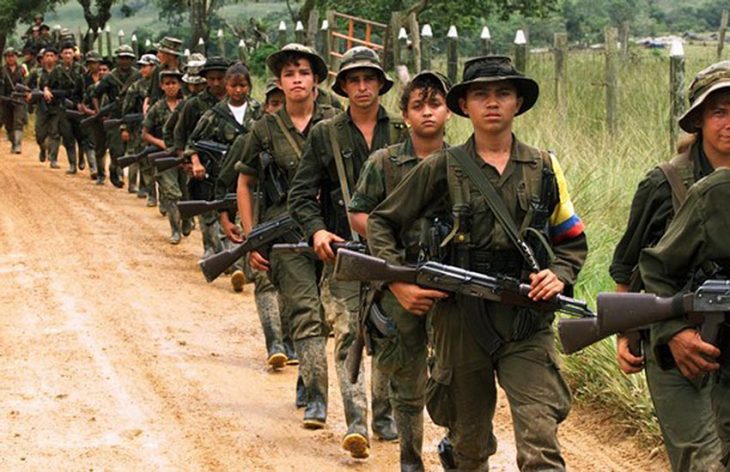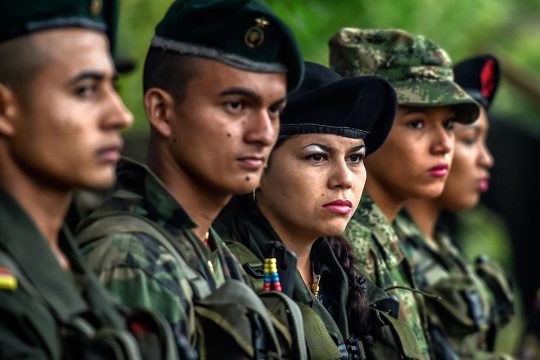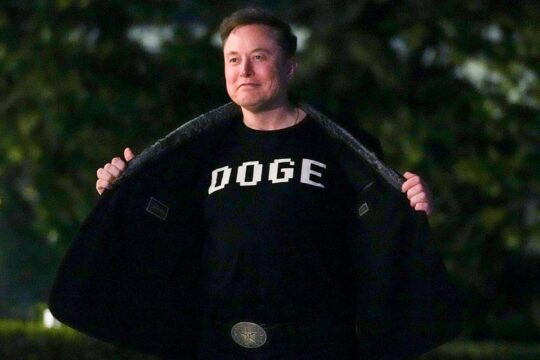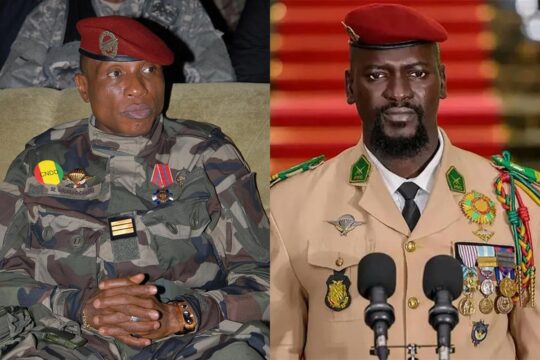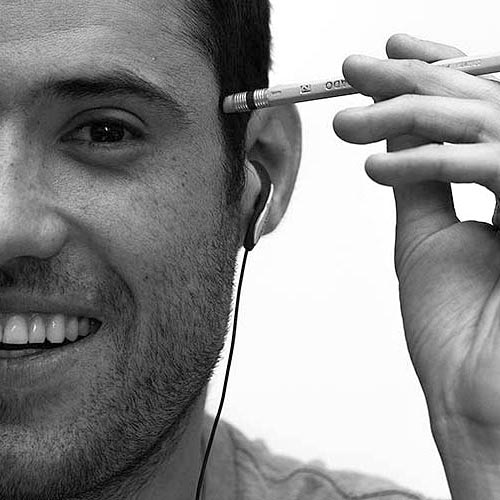Sandra Ramírez, a former Revolutionary Armed Forces of Colombia (FARC) rebel and peace negotiator, made history when she was elected in July as 2nd vice-president of Congress, a feat no other former rebel had attained before in a country that has seen several illegal armed groups switch bullets for the ballot box. Her achievement was quickly marred by a string of media interviews in which she failed to acknowledge that the ranks of the guerrilla she served in for 35 years historically included hundreds if not thousands of child soldiers. This denial sparked outrage.
Two months later, former FARC commanders began timidly admitting their responsibility in this crime and expressing their regret. They are doing so in Case 07, one of the first seven macro-cases opened by the Special Jurisdiction for Peace, Colombia’s transitional justice judicial arm – or JEP, as it is locally known – and one of two specifically focusing on FARC’s deeds.
The power of public hearings
Last month, the special tribunal decided that instructing magistrates can now choose to make preliminary hearings public. Justice Iván González, who is in charge of the recruitment case, became the first to do so. And much in the same way as former FARC finally began heeding victim’s calls to speak of ‘kidnappings’ instead of downplaying them as ‘retentions’, they have now taken steps towards acknowledging the tragedy of child soldiers and their role in recruiting them. However, in a similar vein to the kidnapping case currently investigated by the JEP, recruitment victims and organisations working with them are expecting former rebels to go much further than they have so far. Just as kidnapping victims are demanding that former rebels admit to the cruel treatment inflicted on them and the pain suffered by their families, there are a number of truths that hundreds of former child soldiers hope to see the demobilised guerrilla unambiguously admit in the case led by JEP.
Following Judge González’s decision to make hearings public, former rebels’ testimonies are now being live-streamed. The first to testify were reticent, with Abelardo Caicedo contending that FARC couldn’t check youngsters’ IDs and Rodrigo Londoño, the guerrilla’s former commander-in-chief, admitting it could have happened “due to exceptional reasons”. But they have been more forthcoming over the past two weeks, with Martín Cruz conceding he allowed children under 15 to join. “No explanation or cause justify taking away their most important years of growth and education. We cannot return these children we recruited and incorporated the time they spent in war. We cannot heal the deep wounds we inflicted on those adults who today rightly recriminate us for forcibly depriving them of their childhoods,” Joaquín Gómez, the former commander of FARC’s Southern Bloc, stated after his hearing.
A silent tragedy
Yet, even though both left-wing guerrillas and right-wing paramilitary groups incurred in it and a popular TV series raised its profile, child recruitment has remained a relatively invisible tragedy. Only 108 victims have sought accreditation as parties to the case so far, in contrast to the 2,426 who came forward in the case focusing on kidnappings, an infamous practice that garnered media attention worldwide and traumatised Colombian society.
“There is a significant advance, from FARC’s total denial initially to their recent acknowledgements. These were not isolated cases: the participation of children in war has been a constant in Colombia, in all illegal armed groups,” says José Luis Campo from Benposta, an NGO that accompanies former child soldiers. His words are backed by other numbers: the Government has officially registered 8,895 children as recruitment victims and the National Centre for Historical Memory’s report documented 16,879 cases. Both statistics show that the JEP will probably have to strengthen its outreach efforts.
Even though Joaquín Gómez said he was “willing to acknowledge forced recruitment without ambiguities and euphemisms”, the reality is that FARC have yet to admit to a number of truths around child soldiers within their ranks.
How free is a child or a teen to decide?
One is at the centre of the debate: whether FARC actively sought them. Its former leaders claim that nobody was coerced to join the organisation, but did so “conscientiously”, as Rodrigo Londoño put it. “For us, the important thing is not what surname to give recruitment but understanding that however it happened it was always forced. ‘Forced' doesn't just mean 'by way of force', but having no real choice,” says Hilda Molano of Coalico, a network of seven organisations working with children in the conflict who submitted a report on recruitment to the special tribunal. It means, for example, admitting that power disparities and their territorial control called into question whether children were really free to decide.
FARC insist that their norms forbade enrolling children under 15 and that they raised the minimum age for recruitment to 17 in 2015, while seated at the peace negotiation table. There is a legal rationale for this line of defence: conscripting children under 15 is a war crime under the Rome Statute, while enrolling older teenagers is not (although it is still deemed a crime under Colombian law).
Scores of testimonies, however, show that hundreds joined the guerrilla as teenagers or younger. At least 63% of rebels who deserted FARC between 2012 and 2014 had joined the guerrilla while underage, with 44% doing so while younger than 15, according to National Reincorporation Agency statistics.
Different experiences
Perhaps the most emblematic case is Operation Berlin, a military operation in 2000 that saw the liberation of at least 73 children and the death of an uncertain amount of them after the Army bombed their camp. They were all part of FARC’s Arturo Ruiz Mobile Column, recruited in the tropical lowlands of the Amazon and transferred to the freezing high-altitude moors of Santander where they were spotted by state forces. Twenty survivors of the operation, now fully grown and many of them professionals, got together last year to record their testimonies, drawings and maps. Their report is one of nine submitted by victims and organisations to the JEP.
To complicate matters further, many former commanders themselves joined FARC’s ranks as children, but – as Sandra Ramírez, who joined aged 17, pointed out – don’t feel anyone pushed their hand. Their view of themselves as everything but victims probably hinders them from seeing others under that light. “What Ramírez describes as her truth may be so, but it is only a half-truth. She cannot construe it as representative of the experience of the rest. They must acknowledge that not all children arrived due to persuasion or deception, but also to the use of force or threats,” says Mónica Hurtado, a professor at La Sabana University who has written extensively about forced recruitment by both guerrillas and paramilitaries.
Once in there is no way out
After compiling a database of over 2,000 court cases from different tribunals, including more than 260 cases by FARC, Hurtado has come to the conclusion that child soldiers faced what she has termed “an open entry and a closed exit”. By this she means that FARC had numerous strategies to attract children, ranging from more persuasive ones to coercive ones, but once in there was no way out. Deserters, including children, were severely punished, chained or summarily executed. Retaliations against relatives were also commonplace.
Some of those missing acknowledgments include the impossibility of walking away, the cruel punishments enforced and whether child soldiers performed activities directly related to war (such as participating in hostilities, placing landmines or gathering intelligence) or only indirect ones (including cooking, digging trenches, carrying firewood and providing sexual services). These issues have so far been noticeably absent from FARC’s statements.
“All children involved in the war had to do what was ordered or face the consequences. Age was not taken into account. We were simply tools of war who had to fulfil the organisation’s goals in a conflict that was not ours,” says Juanita Barragán, who was recruited by FARC in 2001 when she was 13 and deserted nine months later. A decade later, she was studying law and was one of the 60 victims who travelled to Havana, Cuba, to talk to the peace negotiating teams.
Violence against women at the forefront
These voices are all calling for a more nuanced public discussion on child soldiers that veers from the simplistic tropes that rebels protected vulnerable children or that all of them became sexual slaves. In their view, this means understanding social realities such as that some children saw the guerrillas as their best option for survival in regions where the state was absent, even while still underscoring the illegality of such actions. Or that, as an investigation by social psychologist Ángela María Estrada showed, many girls from families with a history of domestic violence were seduced and coaxed into joining. As researcher Mónica Hurtado points out, “binary accounts will not allow us to see these complexities.”
Perhaps the most visible aspect of forced recruitment that has come to the limelight has been sexual violence. Even though it has also been a rather invisible crime historically, as JusticeInfo told, it has become a politically contested issue in Colombia over the past year and victims – both supportive and critical of the transitional justice – are pushing for the JEP to open a macro-case on it, not merely when it targets former child soldiers.
It isn’t the only form of gender-based violence that victims are asking the special tribunal to look into. One women’s organisation, Women's Link Worldwide, is pushing for other human rights violations including forced contraception, sterilisations and abortions – which they termed ‘reproductive violence’ – to be included in the JEP’s indictment. At the centre of the report they submitted to the JEP is the case of Helena, a former FARC combatant who was recruited as a 14-year-old and suffered a forced abortion after becoming pregnant and stating her desire to have her baby.

Helena’s case, not an exception
Helena – whose pseudonym was given to her by the Constitutional Court to protect her identity – was initially threatened with being court-martialled and executed, and ultimately tied up, drugged and given an abortion-inducing substance. She was allowed to stay with her family due to the health complications stemming from her abortion, but ended up fleeing after FARC members sent word that she was expected back. She still suffers from urinary tract infection and chronic kidney failure, as well as bouts of depression and post-traumatic stress disorder. Her family was threatened for not revealing her whereabouts.
“We see in their statements that they admit to ‘some cases’ taking place, but they’re clearly downplaying their magnitude. Beyond Helena’s case, our report shows that these were common practices throughout the organisation’s structures and in different regions,” says lawyer Mariana Ardila, who represents Helena before the JEP.
Although FARC commanders are beginning to admit this type of violence, Ardila contends that they’re constantly “introducing question marks” seeking to minimise these behaviours, insisting contraception was voluntary and that pregnancy terminations never took place beyond the third month. “They refer to policy as something that is written down, when it can also be a tolerated behaviour: the question is not whether these were orders, but if it occurred in real life. It’s undeniable that this served the military and political goals of the organisation, inasmuch as they didn’t lose combatants,” she says.
Victims who were also perpetrators
Other victims are also taking issue with FARC’s wording. “They’re refusing to name abortions as such, with commanders like Joaquín Gómez referring to them as ‘pregnancy reversals’. This language is an embellishment that camouflages and distorts reality,” says Yudy Tovar, a 31-year-old former rebel who left FARC 13 years ago and has denounced repeated sexual assaults from her erstwhile superiors.
Tovar is the spokesperson for the White Rose (Rosa Blanca), a group of 300 former female FARC combatants who are highly critical of the transitional justice process and contend that ex-commanders seek to evade their responsibility by arguing that everything that happened in the organisation was consented. Although they speak forcefully about the case in the media, they are yet to submit their report to the JEP – something they promised a year ago – or register as parties to the case.
Rosa Blanca women exemplify another of the complexities of investigating and sanctioning recruitment. In stark contrast to the kidnapping case, whose victims are mostly civilians with no connection to the armed conflict, former child soldiers are both victims and perpetrators, or what legal scholar Iván Orozco – who advised the Government’s negotiation team in the peace talks – has dubbed “dual responsibilities”.
In fact, many of Rosa Blanca’s members are former FARC combatants who were recruited as children, distanced themselves from the organisation as adults and were carrying out prison sentences when the peace deal was signed. This means they are now on probation and also need the JEP to determine their own legal situation, with potential decisions ranging from outright pardons to being indicted in case the JEP deems they were most responsible for any mass atrocity. They are also privy to the accord’s conditions that they contribute with the truth and help redress victims.
In the end, if the JEP is able to provide Colombian society with answers to those missing truths, it will succeed where the ordinary criminal justice system has failed: out of the 132 forced recruitment cases prosecuted by the General Attorney’s Office between 2008 and 2016, 86 ended in convictions, 19 ordered some form of economic redress to victims and none of the accused were doled prison sentences.
In the current transitional justice model, former FARC leaders will only be able to escape a prison sentence if they overcome their reticence to acknowledge the full scope of child soldiers’ tragedy.
FARC VICTIM CHOSEN AS NEW TRUTH COMMISSIONER
Leyner Palacios, a respected Afro-Colombian community leader and survivor of one of FARC’s most infamous massacres, was chosen as the Truth and Reconciliation Commission’s new member two weeks ago, after commissioner Ángela Salazar died of Covid-19 in August.
Palacios hails from Bojayá, a small riverside village in the tropical forests of north-western Colombia where in 2002 FARC launched a cylinder bomb against the church where villagers were seeking refuge from a confrontation between that guerrilla and paramilitaries. The attack left 119 dead, including 28 of Palacios’ relatives. Since then, he has been a vocal victims’ leader, one of the 60 victims who travelled to Havana to speak with negotiators, and led his community’s efforts to plan the December 2015 public ceremony in which FARC publicly apologised for any of their criminal deeds for the first time.
His selection was seen as a nod to the country’s 8,9 million victims, given that his predecessor was also an Afro-Colombian community leader. In fact, at least three other prominent victims’ leaders – Mayerlis Angarita, Juana Ruiz and Yolanda Perea – also submitted their names for consideration. Palacios’ designation as the first TRC commissioner who is a direct victim of FARC was well received, although several women’s groups questioned that the TRC went from gender parity to having only a third of female members. Despite the business sector’s complaints about a perceived bias in the TRC against them, as JusticeInfo told, once again no candidates with private-sector backgrounds put their names forward.


